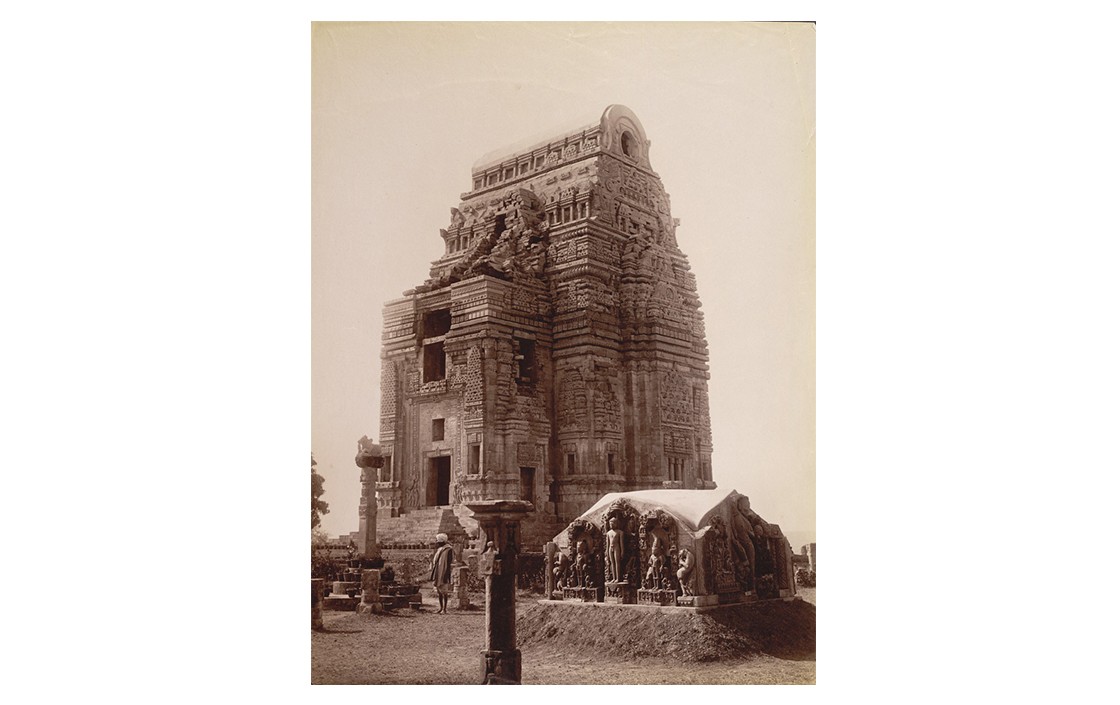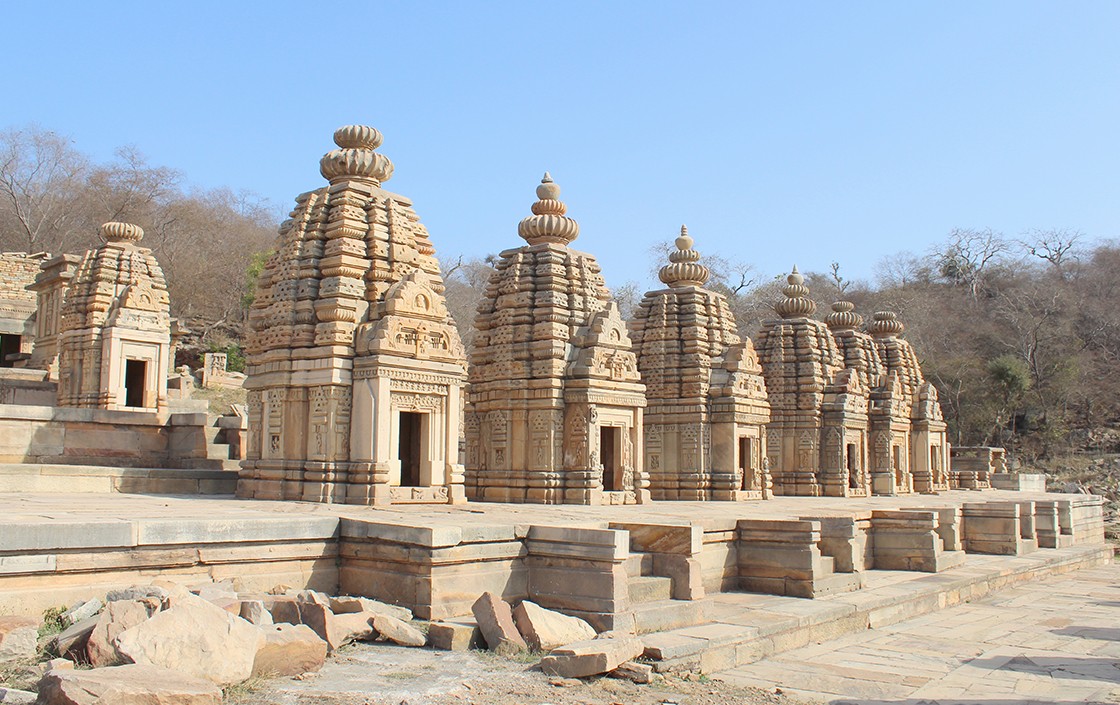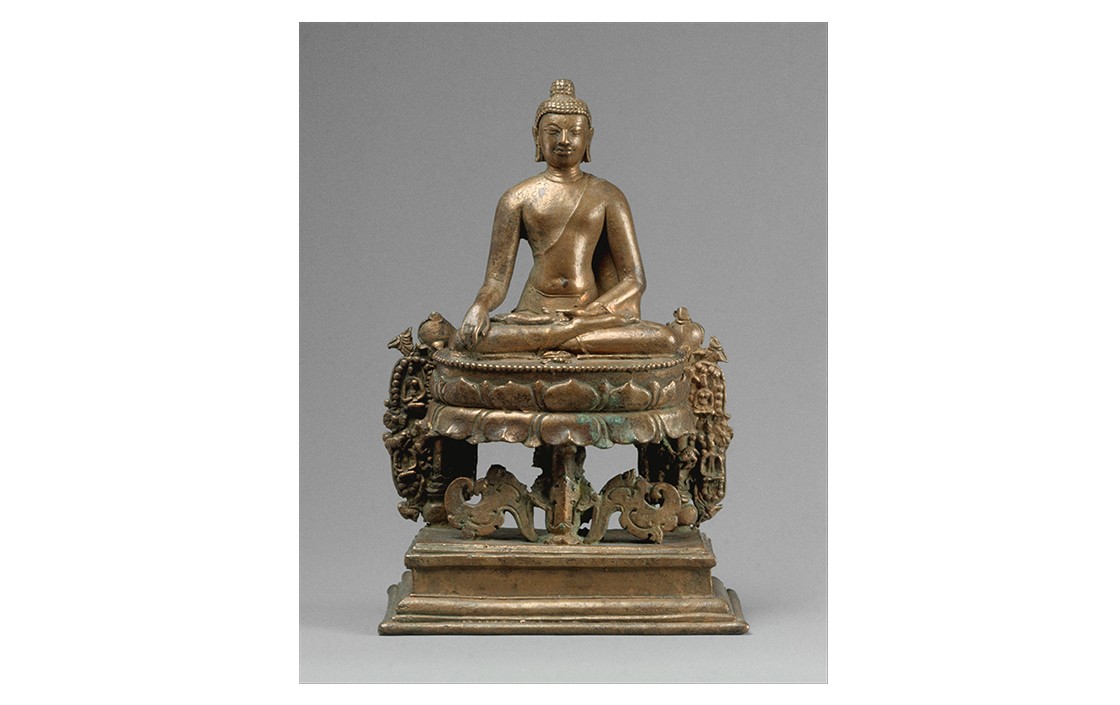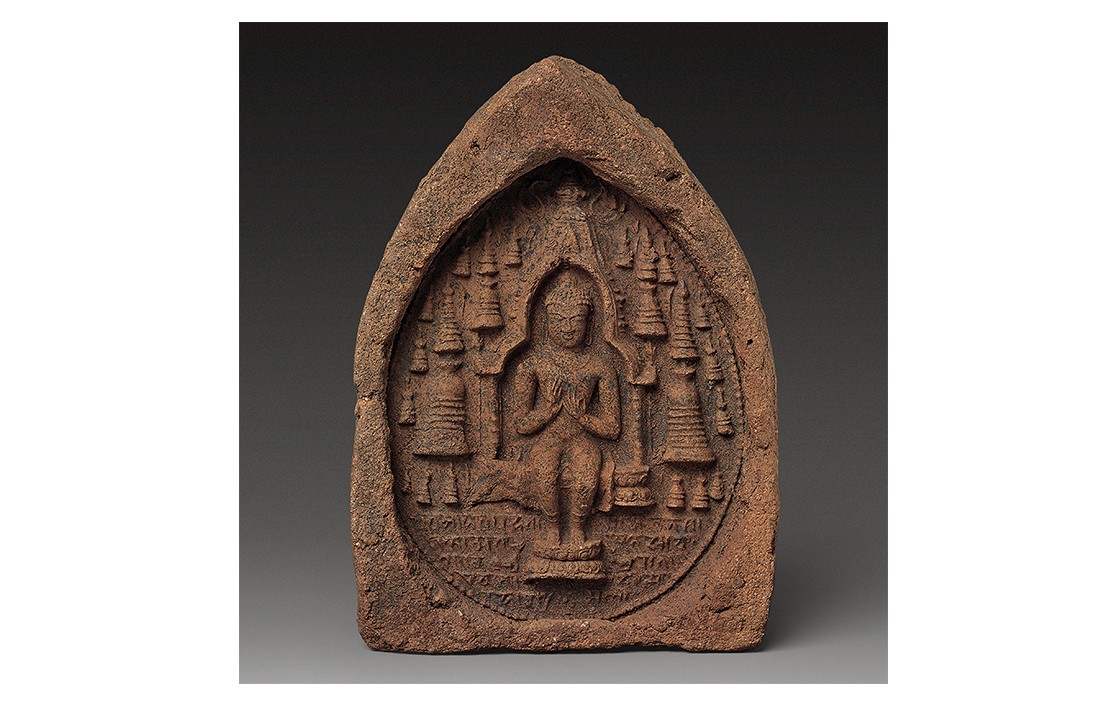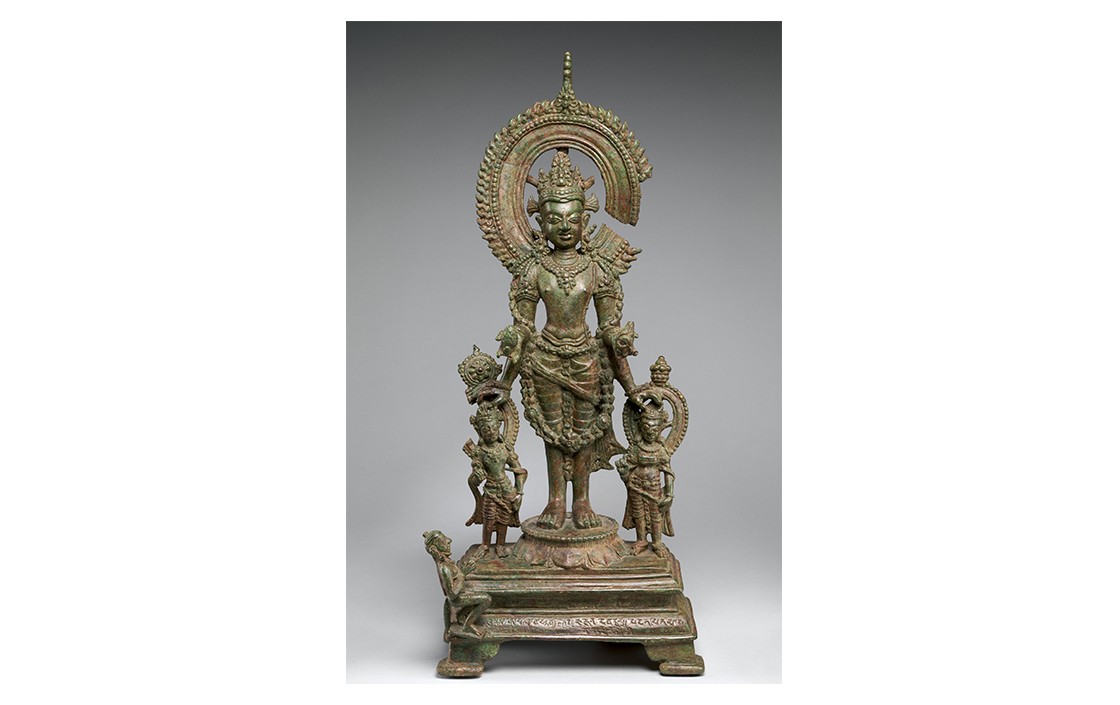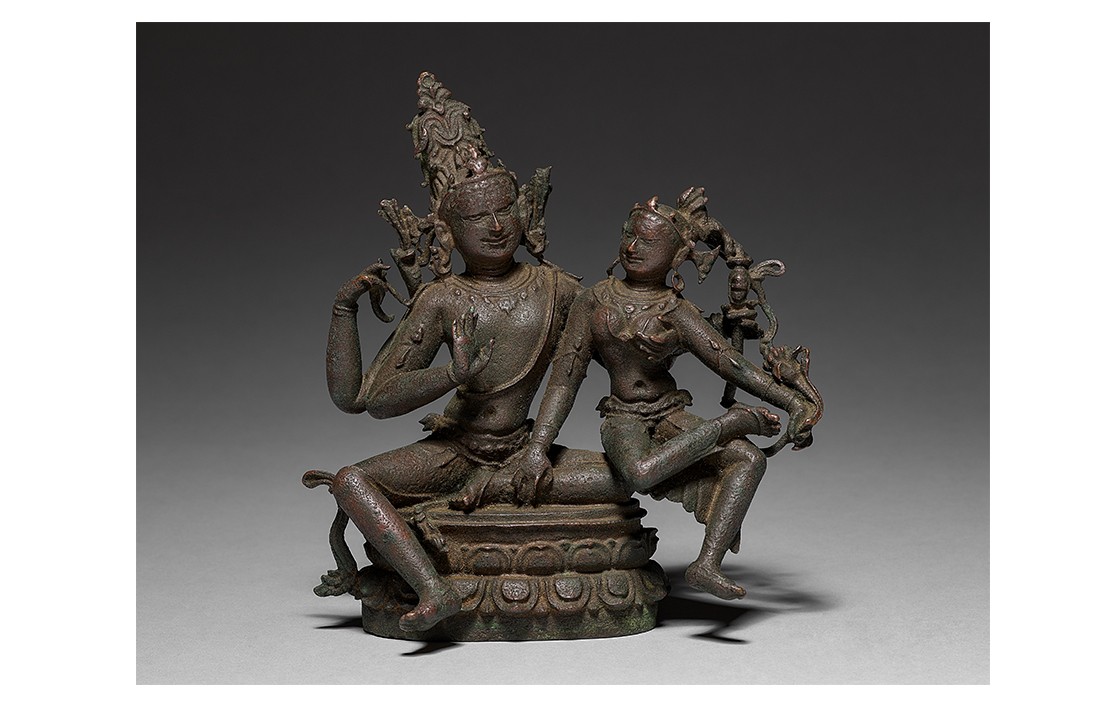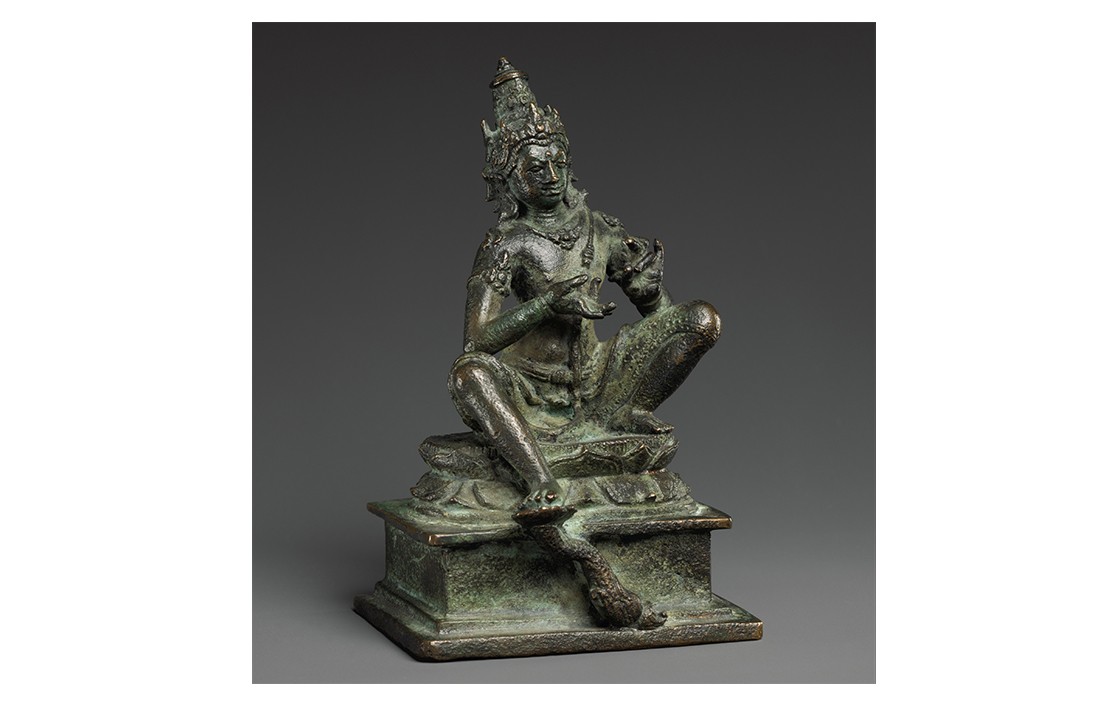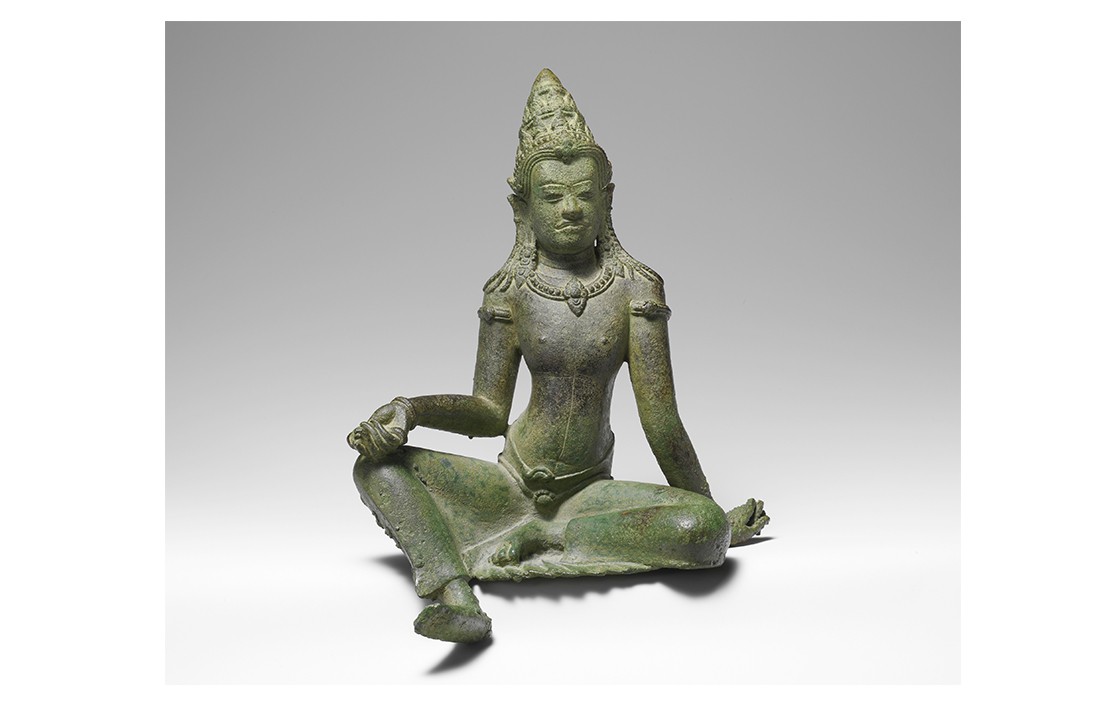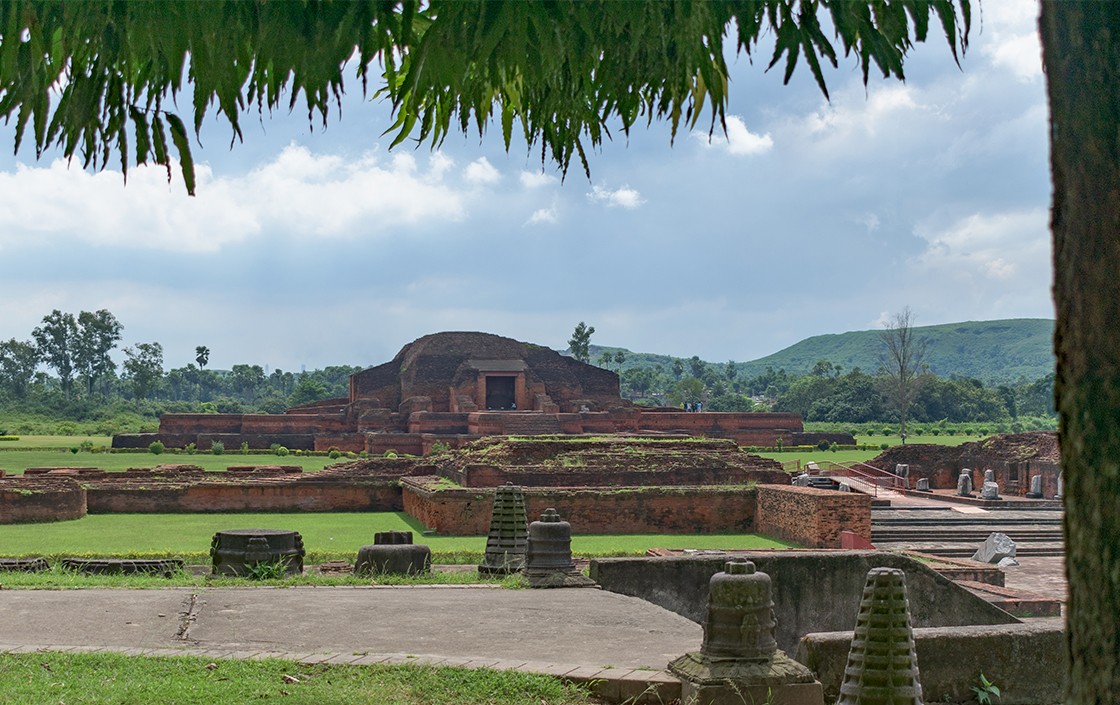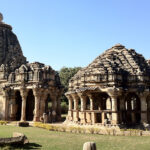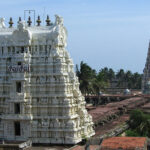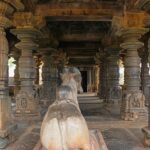The Palas and Gurjara-Pratiharas Expand Their Influence
840 CE
In northern India, the Pala dynasty consolidates their hold over the eastern side of the Gangetic Plains. Originating possibly from lower-caste backgrounds, they legitimise themselves through land grants to Brahmins and Buddhist monasteries. The Pala patronage of institutions such as the Nalanda, Odantapuri and Vikramashila mahaviharas (great monasteries) in present-day Bihar and West Bengal connects them to growing networks of Buddhist exchange in the eastern Indian Ocean, including present-day Odisha, Sumatra and Java; this also translates to increased trade between the regions. A distinctive style of sculpture emerges under their patronage, emphasising softer, rounder figures with elaborate ornamentation, evolving from the Gupta style.
In the Malwa Plateau, particularly the Chambal and Betwa River systems, the Gurjara-Pratihara dynasty expands into present-day Gujarat and parts of present-day Rajasthan. Their patronage leads to the development of the Gurjara-Pratihara style of architecture, consisting of an open pavilion attached to a tall vimana (tower), often in the Latina or Bhumija mode. Notable structures include the Teli ka Mandir, Gwalior and the Bateshwar temple complex in present-day northern Madhya Pradesh.
Bibliography
Buswell, Robert E., and Donald S. Lopez. The Princeton Dictionary of Buddhism. Princeton: Princeton University Press, 2014.
Hardy, Adam. The Temple Architecture of India. Chichester: Wiley, 2007.
Kramrisch, Stella. The Hindu Temple, Volume 1. Kolkata: Calcutta University, 1946.
Kulke, Hermann. “Śrīvijaya Revisited: Reflections on State Formation of a Southeast Asian Thalassocracy.” Bulletin de l’École Française d’Extrême-Orient 102 (2016): 45–96. http://www.jstor.org/stable/26435122.
Feedback 
This entry appears in
Art in South Asia
Visit Timeline
Associated Timeline Events
First Published: March 11, 2024
Last Updated: July 2, 2024



